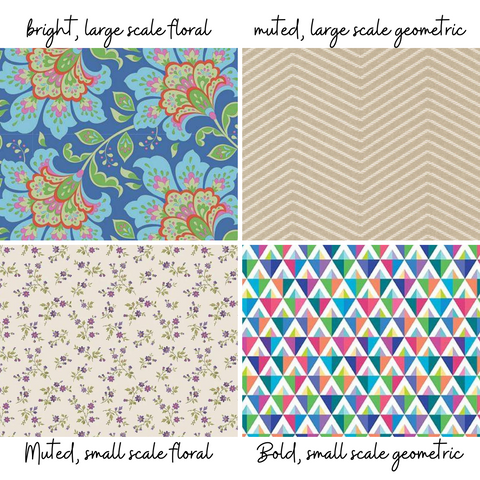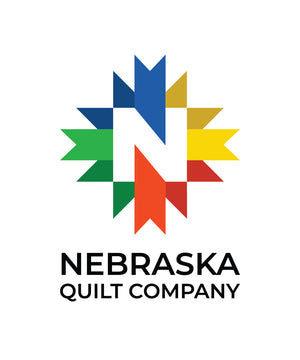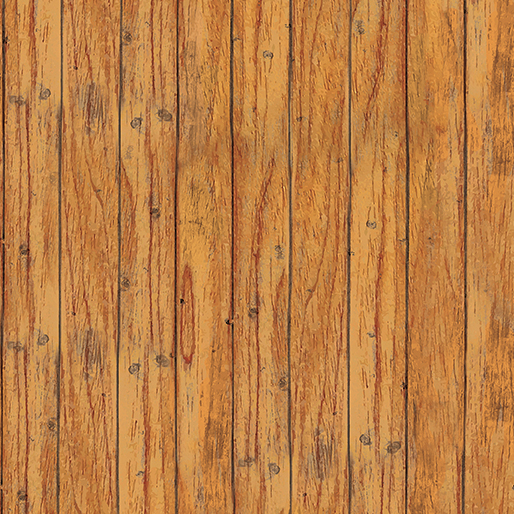I'm a beginner. How do I choose fabric for my first quilt?
When it comes to quilting, the fabric you choose will set the tone for the whole project. Working with fabrics you love is important. Quilting is your hobby, not your job, so you want to set yourself up to enjoy the full process. In this beginner's guide to quilt fabrics, we're talking about prints, colors, and pattern mixing so you pick a fabric mix you’ll love.
Types of Prints
Though the variety of prints on fabric is virtually endless (just take a look at our shelves at NQC and you’ll see what we mean), we’ll start off talking about three of the most popular types of prints: Floral, Geometric, and Novelty. 
See all Fabric Collections available at Nebraska Quilt Company.
Florals
Floral prints add a touch of natural, organic beauty to any quilt. Though florals are often traditional in their style and color schemes, they can also be bold and bright.
Geometric prints
Geometric designs convey structure and can add a modern touch to your quilt. Of course, the piecing of your quilt will result in a clear geometric design, so keep in mind how the angles and shapes printed on the fabric will appear on the pieced quilt.
Novelty prints
From holiday-themed prints to licensed characters, novelty prints add personality and whimsy to your quilts. Novelty fabrics can be great for kids quilts- find their favorite princess, airplane, or superhero and make that the central fabric. While a kid won’t grasp the amount of time and care you put into making the quilt, they’ll love receiving a cozy gift in a familiar theme.
Blenders
In the quilt world, the term "blender" refers to a fabric print that is versatile and used to bridge different colors or patterns within a quilt design. Blender fabrics have subtle designs, allowing them to harmonize with but not overshadow other fabrics in the quilt. Quilters use blender fabrics strategically to add depth, movement, and visual interest to their quilts while maintaining a balanced look.
Low Volume
In quilting, "low volume" refers to fabrics that have a light or neutral color palette and subtle prints or textures. These fabrics typically have a low contrast between the background color and the print, resulting in a gentle, understated appearance. Low volume fabrics are often used as background or neutral elements in quilt designs, providing a quiet backdrop that allows other fabrics or elements to stand out more prominently. (Low volume prints often make great blenders.) They can include pale shades of white, cream, beige, gray, or soft pastel colors, as well as small-scale prints. Quilters use low volume fabrics to add depth and contrast to their quilt projects.
How to Mix Prints
Start with a cohesive color palette: Choose prints that share similar hues or tones to create a unified look, even if the designs themselves are different.
Vary print scales: Mix prints of different sizes and repeats to add visual interest and prevent overwhelming the design. Pair large-scale prints with smaller ones for balance.
Incorporate blenders or low volume fabrics: Use solid fabrics or subtle prints as buffers between bold patterns to provide breathing space and prevent the design from becoming too busy.
Pay attention to balance: Distribute prints strategically throughout the design. If you’re aiming for a fully symmetrical look, distribute prints evenly. However, if you want to achieve an ombre effect, place smaller prints and lighter colors at one end and transition to larger prints and deeper colors at the opposite end.
Consider a Quilt Kit- Let a Pro Pick Your Mix
If you’ve loved learning more about quilt fabric terms and concepts, but you’d like to reinforce these lessons by seeing how an experienced designer selects fabrics, then look for Quilt Kits. Kits include a pattern, instructions, and cuts of complementary fabrics that you’ll use to make the quilt top. The color palette and mix of prints will be balanced to create an overall cohesive look. Kits sometimes also include backing fabric, binding, and batting, so read the details to make sure you’re clear on what’s included.
When you’re a beginning quilter, all the fabric options can feel overwhelming. Quilting is a creative process, though, and you decide what rules to follow. Remember to trust your creativity and have fun experimenting with fabric selection!
Ready to Learn More?
Check out our post on how to choose your first quilt pattern!
If you're looking for in-person print mixing guidance or inspiration, visit Nebraska Quilt Company, where our knowledgeable staff and huge fabric selection are always here to help bring your quilting dreams to life.
We’re your source for quilt kits, classes, retreats, machines, patterns, fabric and more! Visit us online or in store to learn more.



